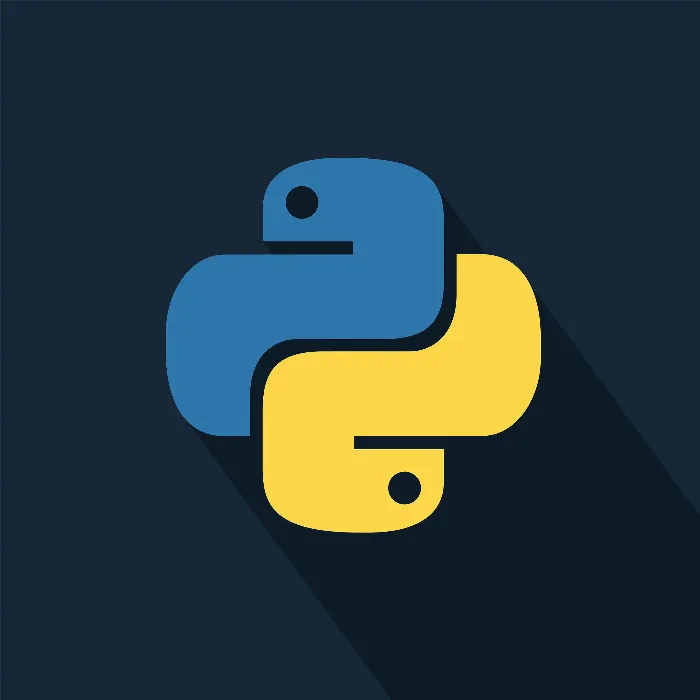Dictionaries are a fundamental data structure in Python that allows you to store values under specific keys. This structure is extremely flexible since you can use any data type as a key, not just numbers. In this guide, you will learn how to effectively create, edit, and query dictionaries. We will also go through additional methods and functions that will help you harness the full potential of this useful structure.
Main Insights
- Dictionaries allow the mapping of values to keys.
- You can use keys of any data type, including numbers and strings.
- There are various methods to access the keys, values, and elements of a dictionary.
Step-by-Step Guide
To create a dictionary, you start with curly braces and define your key-value pairs.
Once you have created your dictionary, you can access or expand it.

In this case, you have keys with their values, and you can easily adjust the calculation.
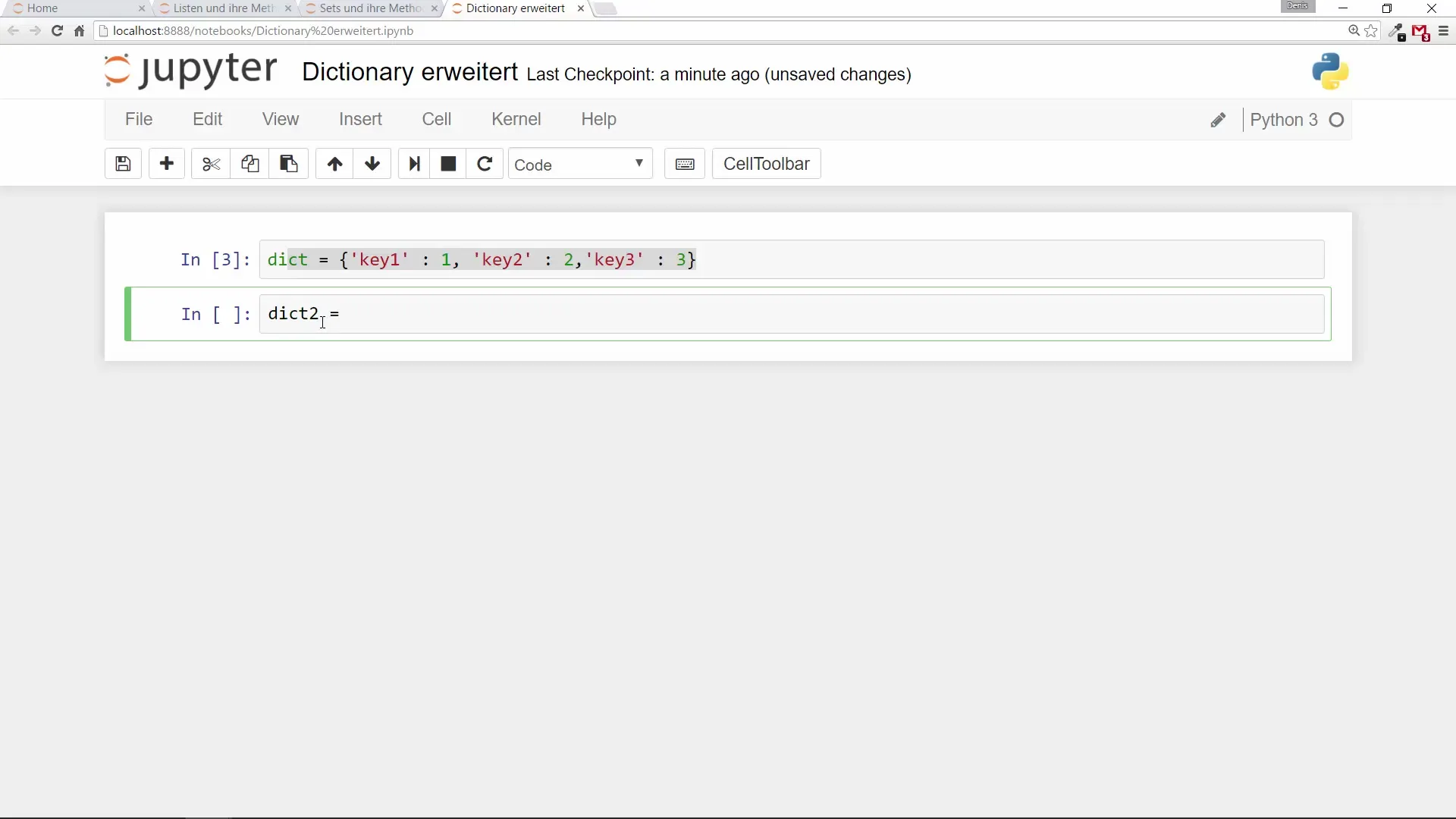
A useful method is using a range in combination with a dictionary.
The result will include all values from 0 to 6 along with their square values.
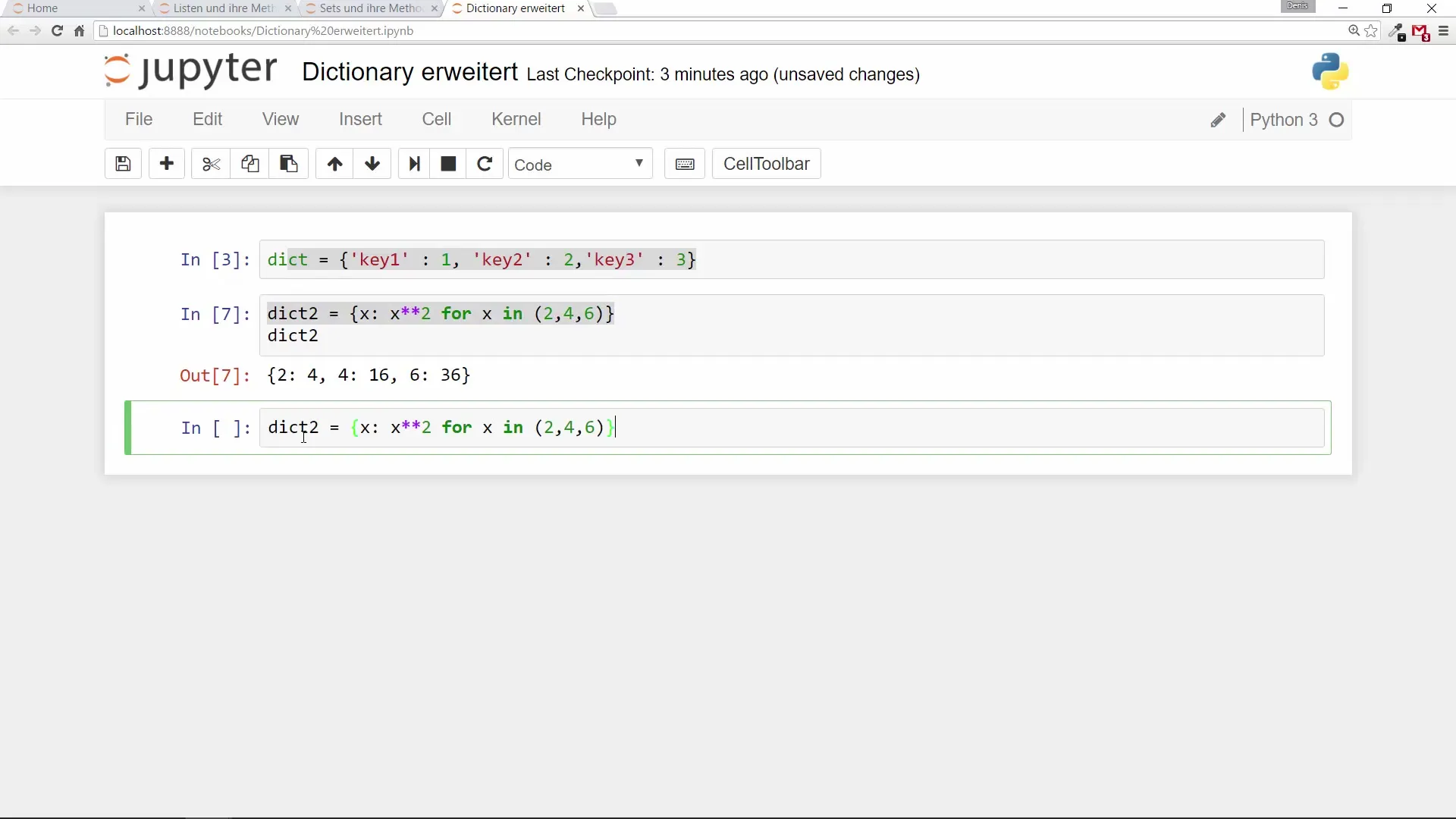
To retrieve all keys of a dictionary, you can use the keys() function.
This is helpful for getting an overview of existing key points.
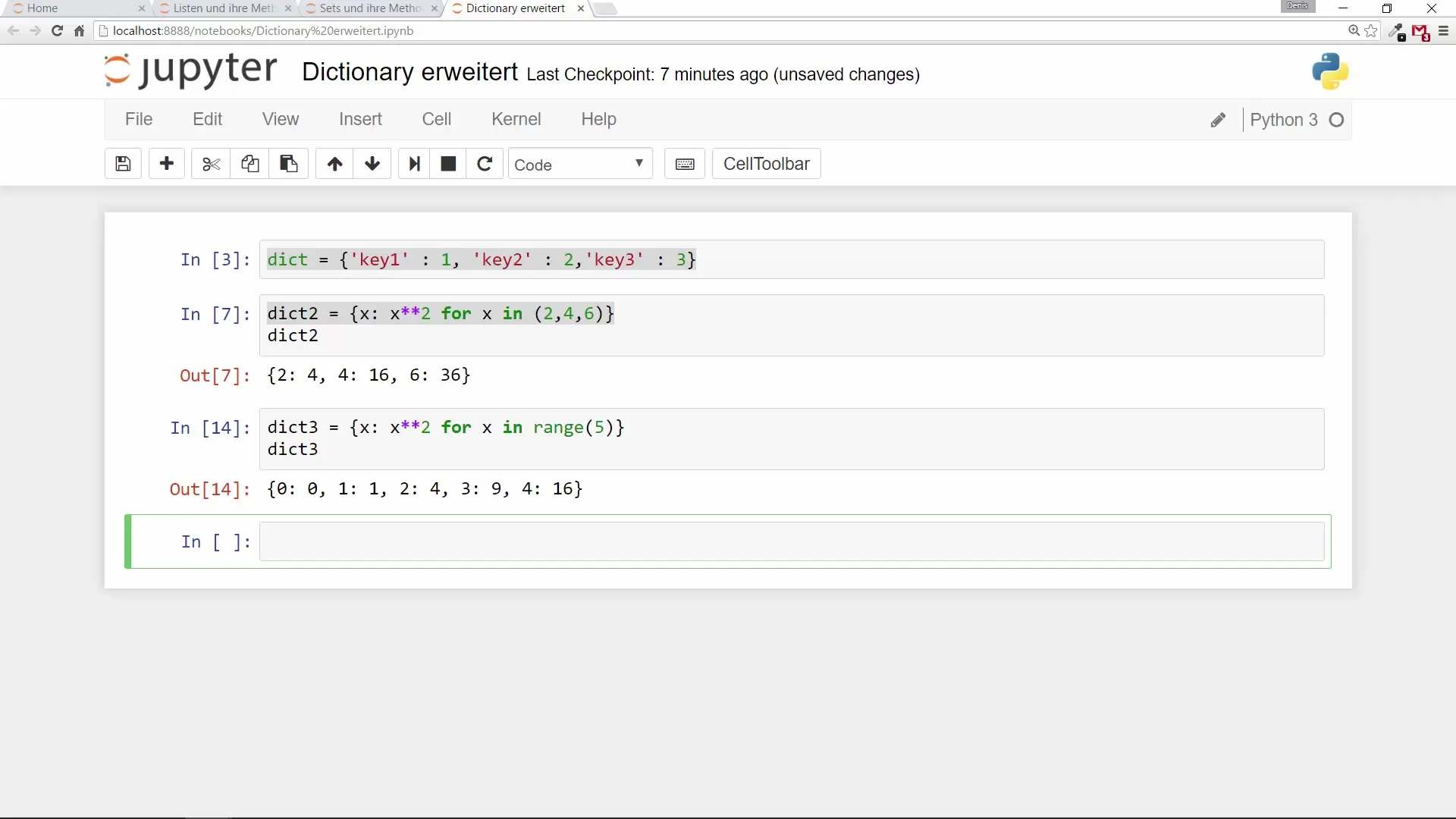
This method is especially useful when you want to view the values independently of their keys.
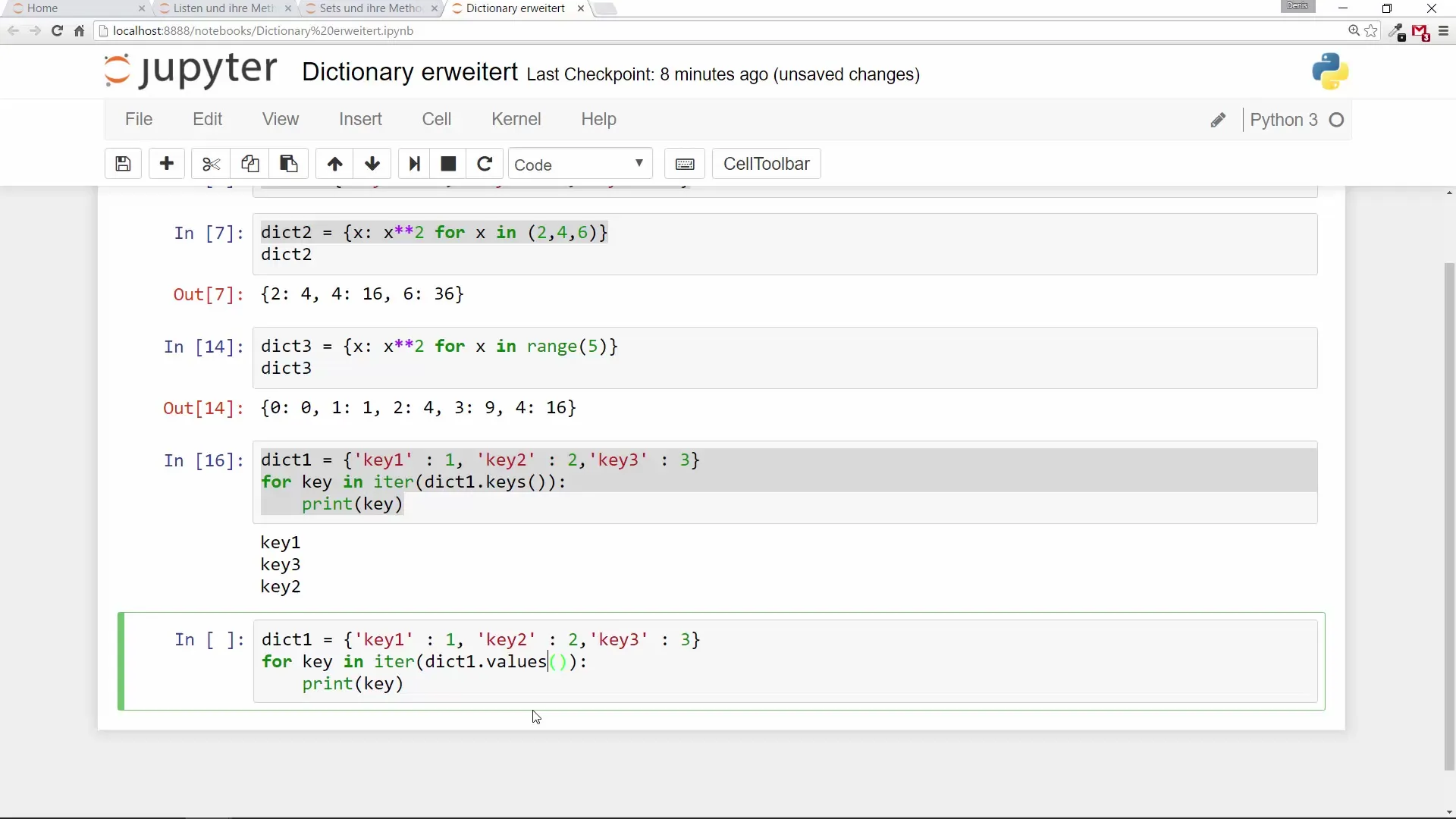
It is also possible to output both keys and values in the form of tuples using the items() method.
This way, you see pairings, making it easier to track the mappings.
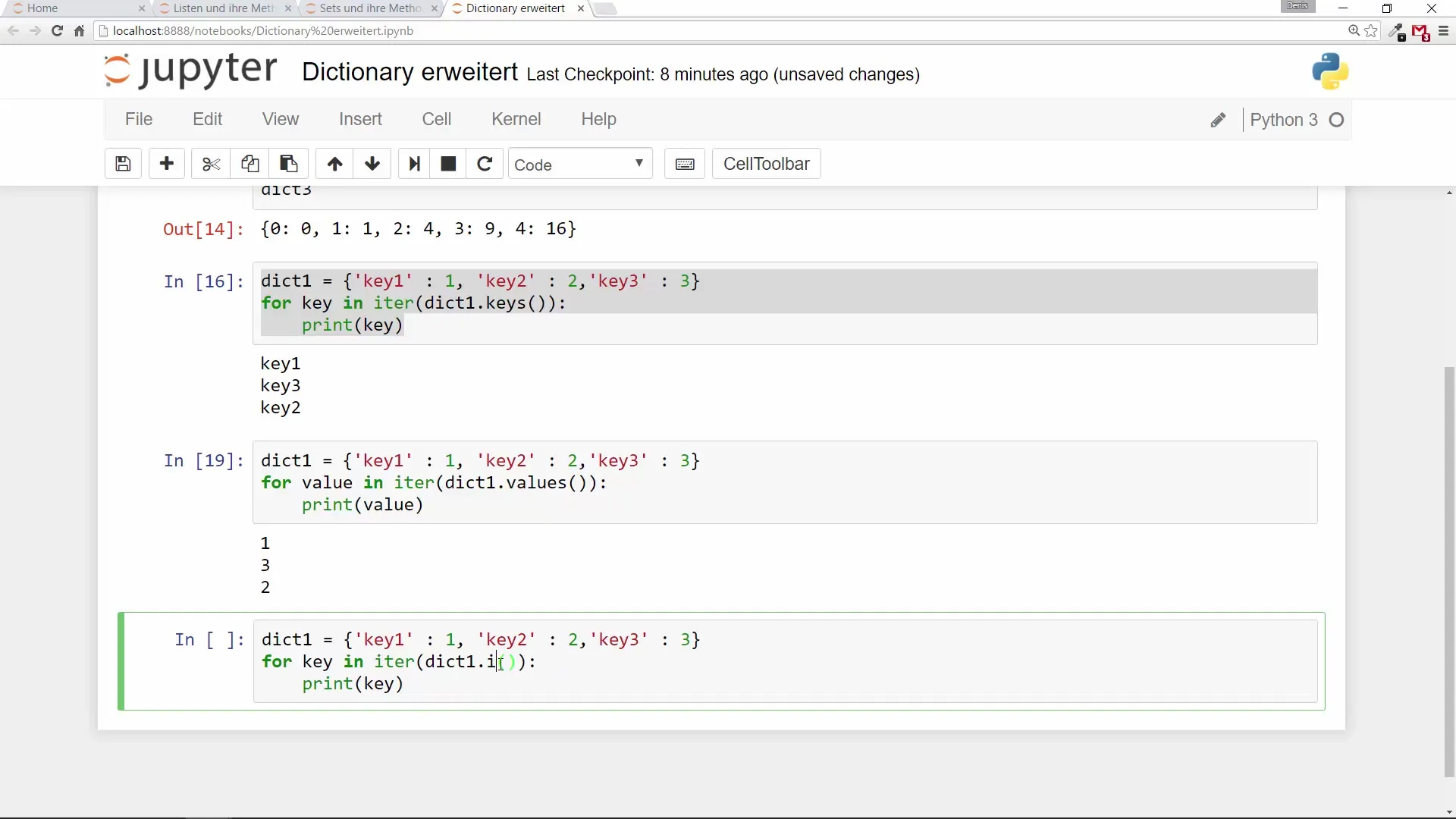
If you want to use the viewitems() function, something has changed in Python 3. You just need items().
This will give you an overview of all entries in your dictionary.

For using dictionaries in Python 2, you may need to use viewkeys() and viewvalues(), whereas in Python 3, it's simply keys() and values(). This is an important point to consider when using different Python versions.
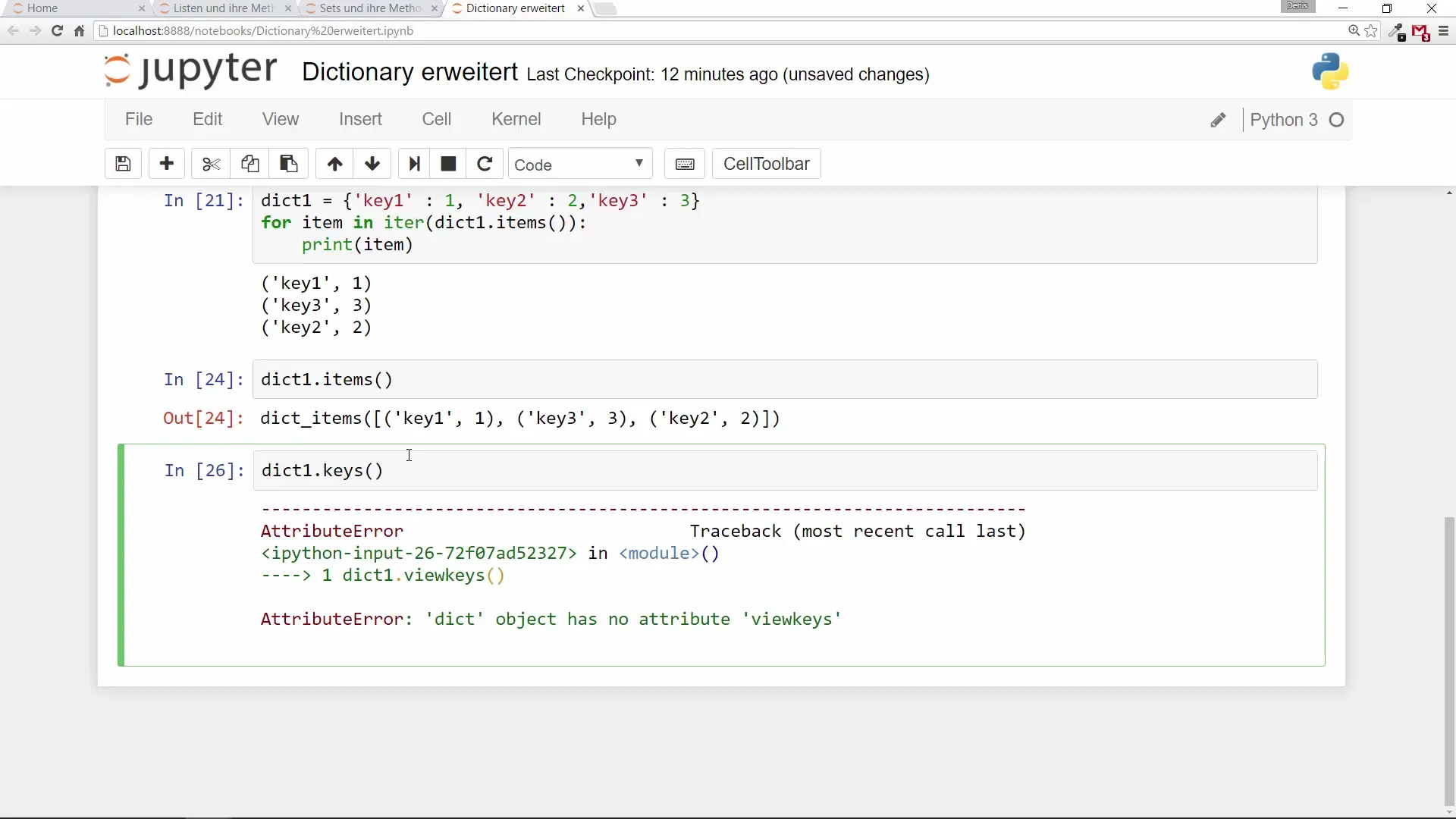
In summary, we have covered the basics and some advanced methods for working with dictionaries in Python. Familiarize yourself with these concepts to effectively apply them in your own projects.
Summary – Python Programming for Beginners – More About Dictionaries
In this guide, you have learned in writing how to create, edit, and query dictionaries in Python. You have become familiar with basic functions such as keys(), values(), and items(), and learned how to work efficiently with loops. The variety of methods allows you to structure your data more efficiently.
Frequently Asked Questions
How do I create a dictionary in Python?To create a dictionary, you can use curly braces and define key-value pairs.
Can I use a specific data type as a key for a dictionary?Yes, in Python you can use many different data types, including strings and numbers, as keys.
How do I get all the keys of a dictionary?You can use the keys() method to retrieve all keys of a dictionary.
Is there a method to retrieve both keys and values?Yes, by using the items() method, you will get all key-value pairs in the form of tuples.
What is the difference between Python 2 and 3 in handling dictionaries?In Python 3, you use keys() and values(), while in Python 2, viewkeys() and viewvalues() were used.
